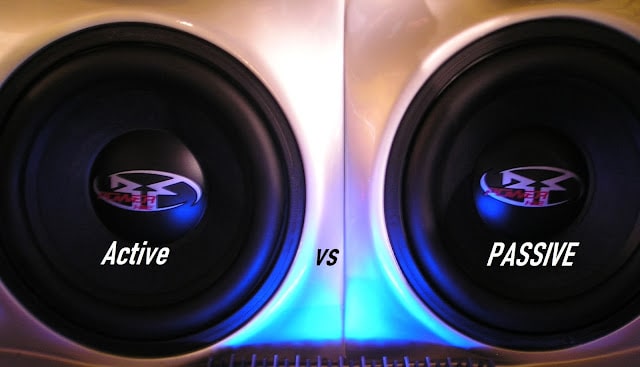Passive vs Active Subwoofers.
Passive Subwoofers.
Passive subwoofers are called passive because they need external power by an amplifier or Audio player. This is similar to traditional speakers. a passive subwoofer needs an external source of power from an amplifier or AV receiver. They are generally preferred by music brands and normally used in home theaters or hi-fi music systems and are suitable for a large room. The important thing about a passive subwoofer is that the passive subwoofer doesn't contain any internal amp-like active sub and passive sub needs more power to reproduce low-frequency sounds, the amplifier or A/V receiver must be ready to deliver nearly equal or higher than power as subwoofer watts to sustain bass effects reproduced by the sub while not exhausting the ability provide within the A/V receiver or electronic equipment.
Active Subwoofer.
An active subwoofer is also known as a powered subwoofer This type of subwoofer contained a woofer and a built-in amplifier. The subwoofer and the built-in amp are matched to get quality performance and both are set in the same box. This type of sub did not takes the power from the A/V receiver and allows the receiver or amplifier to send the full power only to speakers like mid-range and tweeter.
Difference between Passive and Active Subwoofers.
The main difference between active and passive subwoofers is that a passive subwoofer depends on an external amplifier, where an active subwoofer contains a built-in amplifier. The passive subwoofer would be a better choice if you want to use it in a medium-size room, where you don’t want a more powerful sound because of noise complaints issues. The passive subwoofer is usually lighter than the active subwoofer, Also related to space issues, passive subwoofers can be a good choice when you’re going to use the subwoofer in a fixed area and it will be difficult to change the place of the sub in the future. If you connect the sub into an external amplifier, you can still change or upgrade the amplifier in the future to get better sound. Despite all the benefits of the passive sub, however, active subwoofers are still more popular in home theater choice because most of the av receivers did not have power sub out and they can produce more powerful and deeper bass as compared to passive sub deeper and the active sub don’t require to buy or use of any extra components or parts.
Pros and Cons.
Passive Subwoofer.
As above said, passive subwoofers do not have a built-in amplifier and it maybe affects the components of the power.
Pros of the passive subwoofer.
Set-Up: Works With Almost Any Receiver/Amplifier Because All The Amplifier Has Subwoofer Out But If You Want Dolby Setup Active Sub Would Be Better.
Design: Passive subwoofers allow custom configuration and total control over your home theater set up.
Power: the power consumption of passive subwoofers is less as compared to active sub and obviously it will have minimal impact on your power bill.
Expense: Passive subwoofers are often cheaper than active subwoofers.
Connectivity: Passive subwoofers are easy to combine multiple subs for a large home theater set up and you can easily use passive subs in your car.
Cons of the passive subwoofer.
Expense: Cost may significantly increase according to the quality and power components you want to buy.
Set-Up: You will need higher quality cables and higher quality cables are quite expensive
Power: you need to ensure that the proper power will be delivered to each of the connected speakers and subs.
active or power subwoofer.
Active Subwoofer Pros:
Connectivity: Active subwoofers are more popular in home theater systems as compared to the passive sub.
Set-Up: There is no need for expensive wires set up is easy.
Design: Most active subwoofers have stereo and LFE in, optimizing bass frequencies with the help of a single subwoofer.
Amplifier: All required components are built-in. you don't need to do anything just plug and play.
Design: Can be placed anywhere you want because the cable contains only the audio signal, not power.
Active Subwoofer Cons:
Expense: active subwoofers are more expensive than passive subwoofers.
Power: Active subwoofers require more power as compared to passive subwoofers.
Design: subwoofer enclosure is heavier than passive subwoofers
Compatibility: Requires that your receiver has a subwoofer pre-out port but its doesn't matter because almost all av receiver have pre-out.










.jpg)



0 Comments